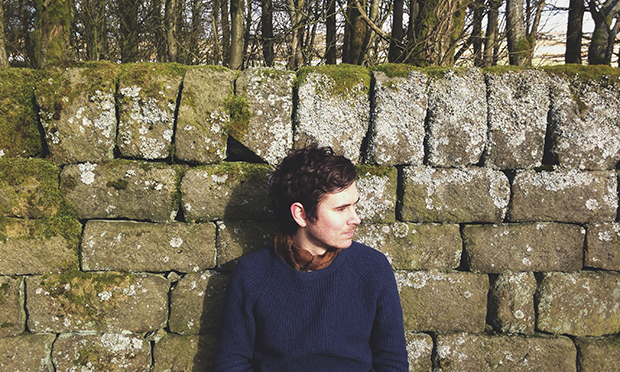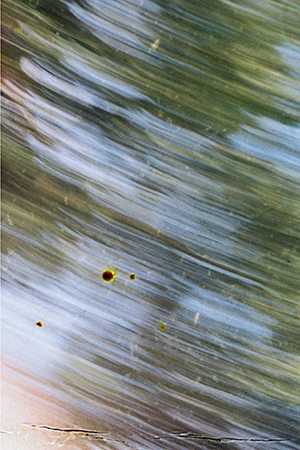
A water fowl making its nest with rubbish, green pond weed covering a river’s surface with tyres and empty plastic bottles. To most of us, river pollution looks something like this. But for Rob St John, there many different ways of seeing – and hearing – water pollution.
The Lancastrian artist, writer and musician, was commissioned by the Love the Lea project, run by charity Thames21, to use art and science to explore and document pollution creatively in London’s second largest waterway.
Almost a year later, and Surface Tension – an album of new music and field recordings – is complete. A book of photography and writing is to accompany the music, and this month photographs from the project will be on display at Stour Space in Hackney Wick.
Ben Fenton, of Thames21, commissioned Rob St John with the hope of raising awareness of pollution in the Lea in ways that can engage new audiences.
Over the course of a few weekends last summer, St John walked most of the length of the middle and lower Lea, taking with him various bits of recording equipment.
This included special microphones in his ears that record a 360 degree stereo field. Listening back he heard swans landing, bikes going past. Then, to capture the sound of the river itself he used hydrophones, microphones that go underneath the surface of the river and pick up what’s going on down there.
“It’s a bit like fishing for sound,” St John tells me. “ Sometimes it’s absolutely nothing, sometimes it’s really cool rhythms from propellors or boats.
“One of the most unusual sounds is when you put the hydrophones into pond weed. What it’s doing is photosynthesizing so it’s giving off all these tiny air bubbles.
“When they hit hydrophones they give off this wonderful bubbly, murky crackle, almost like electronica. “Under the surface of the Lea, with its oil slicks and duck weed, a surprisingly diverse world has survived.

“The Lea’s amazing because there are still plants and animals and fish living there against all the odds. I was fascinated by the diversity that exists below the surface levels. So surface tension became this organising idea as a project title. It’s about the tension between two different things: clean and polluted, natural and unnatural, air and water.”
Alongside sound recordings, St John was portrayed the plight of the Lea visually by taking photographs with a pin hole camera made from a Lesney toy matchbox (the Lesney factory was on the river at Hackney Wick) and a vintage 120 film camera.
During the winter months, he then went back up to Yorkshire, taking with him bottles and bottles of Lea water, which he used to develop the film. “My girlfriend had the horror of seeing that I’d filled my studio with developing trays full of Lea water, and I had various films all soaking and degrading over different amounts of time.
“Some of them came out almost a bit out of focus and hazy, as a result of duckweed, oil or decaying leaves. Some of them had these incredible light flares and some of them just had a really light footprint of these weird microscopic bits of life.”
Scientifically, one of the most impressive methods used to create the music of Surface Tension is called sonification. St John gathered data from volunteer UCL scientists about pollutants in the river and was able to turn it into music using software.
“I fed samples in and then just let the data from each site define what that sound did. I’m really fascinated because it’s a very aesthetic and even arbitrary process what you decide to map onto what. It’s an area where there’s this real tension between science and scientific data and aesthetics and art, and that’s something I’m really interested in.”
Coming from Lancashire, it was interesting to hear St John’s perspective on the River Lea. “Maybe because it’s been so canalised it almost doesn’t feel like a river,” he says. “At least compared to when it flows round the back of Hackney Marshes where it seems to take on that lease of life again for a mile or so. That loss of wildness makes me ask if we’ve forgotten this is potentially an important biodiverse ecosystem.”
Surface Tension
Until 4 May
Stour Space
7 Roach Road, E3 2PA
Listen and order Surface Tension book/CD at surfacetensionriverlea.bandcamp.com/ album/surface-tension
surfacetension.org.uk
